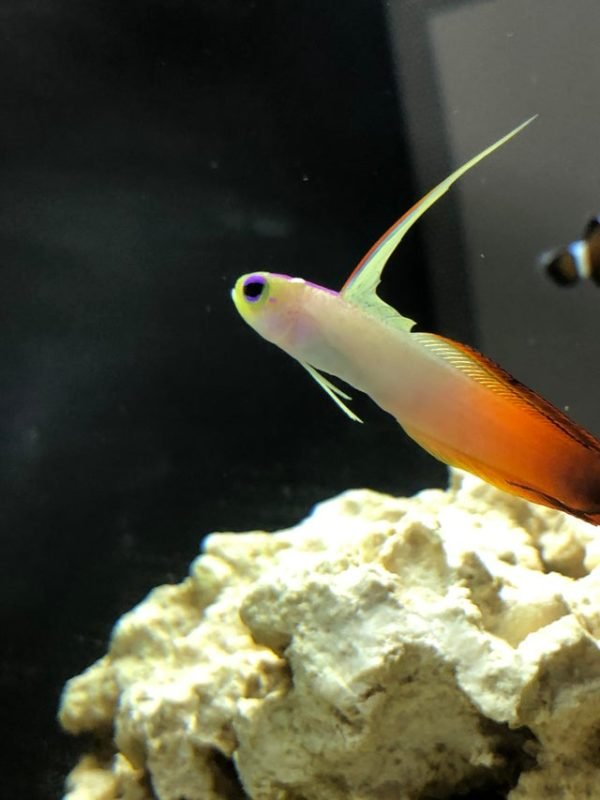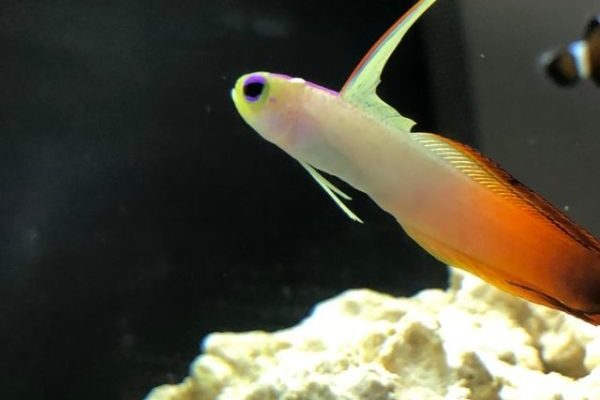
Firefish, particularly the Barnacle Blenny or Firefish Goby, have specific needs and vulnerabilities. They might seem low-maintenance, darting around your tank with glee, but they’re not invincible. Instead of waiting for problems to arise, let’s dig into some of the common health issues that can affect firefish and explore proactive steps you can take to keep them happy and healthy.
1. Stress: The Silent Killer
Stress is a leading cause of health problems for firefish. You might think of stress as something we deal with in our busy lives, but fish can feel it too! Overcrowded tanks, aggressive tankmates, or sudden changes in water parameters can lead to stress. This can weaken their immune systems, making them more prone to diseases.
Here’s a visual: imagine you’re at a party, packed in a small room with loud music. Not exactly relaxing, right? That’s how stress feels for your firefish. To prevent this, ensure your tank has adequate space. A good rule of thumb is to keep at least 10 gallons of water for each firefish. Also, monitor the behavior of tankmates. If they’re nipping at fins or chasing your firefish, it might be time to rethink your tank setup.
How to Identify Stress in Firefish
Look for signs such as hiding, lethargy, and a loss of appetite. If your firefish is spending more time behind rocks or plants and less time swimming freely, it’s a red flag. Regularly check your water quality, as imbalances can also contribute to stress. The key is to maintain a calm environment for these sensitive swimmers.
2. Velvet Disease: The Gold Dust Disease
Velvet disease, or Oodinium, is like the annoying glitter that just won’t go away. This disease gives your firefish a “dusty” appearance, which can be hard to spot at first. Affected fish might also exhibit signs of distress, such as rubbing against surfaces or rapid gill movement.
The tricky part is that velvet thrives in poorly maintained tanks, often appearing when water quality dips. To prevent velvet, keep your tank clean. Regular water changes, adequate filtration, and avoiding overcrowding can help create a more stable environment. If you suspect velvet, acting quickly is crucial. Quarantine any affected fish to prevent the spread.
Signs of Velvet Disease
Be on the lookout for:
- Gold or yellow dust on the skin and fins
- Rubbing against objects in the tank
- Rapid gill movement or lethargy
If you notice these symptoms, consult with a vet specializing in aquatic life for treatment options.
3. Fin Rot: A Common Bacteria Issue
Fin rot is another common health issue among firefish. This bacterial infection typically results from poor water conditions or stress. If you see raggedy edges on your fish’s fins, that’s a sign of rot. It’s not just unsightly; it can lead to more severe health problems if left unchecked.
Just like a bad haircut, fin rot can be distressing for your fish. To prevent it, keep your tank clean and ensure your fish are not overcrowded. A well-balanced diet rich in vitamins can also boost your firefish’s immune response. When they’re healthy and well-fed, they’re less likely to fall victim to bacteria.
Treating Fin Rot
If your firefish does develop fin rot, treatment typically involves:
- Quarantining the affected fish
- Using antibacterial medications
- Improving water quality through regular changes
Consistency is key to seeing improvement!
4. Ich: The White Spot Disease
Ich—short for *Ichthyophthirius multifiliis*—is one of the most notorious health problems for firefish. It’s like that uninvited guest that shows up at your party and just won’t leave. This parasite presents itself as small white spots on the fish’s body, fins, and gills.
Ich can spread quickly, so prevention is critical. The best approach is to quarantine new fish before introducing them to your main tank. This gives you time to observe for any signs of illness. Additionally, keeping water parameters stable can help your fish resist parasites.
Identifying and Treating Ich
If your firefish gets ich, you’ll typically see:
- White spots on the body
- Increased scratching against surfaces
- Lethargy and reduced eating
For treatment, consider using an aquarium salt solution or specific medications designed for ich. Follow the recommended instructions carefully to ensure the safety of your fish.
5. Swim Bladder Disorder: Floating Troubles
Swim bladder disorder is a condition that affects a fish’s ability to control its buoyancy. This can lead to your firefish floating awkwardly or having trouble swimming. Think of it like trying to balance on a seesaw when one side is too heavy. Water quality, overfeeding, or even genetics can contribute to this issue.
To prevent swim bladder disorder, carefully regulate your firefish’s diet. Overfeeding can lead to bloating, which puts pressure on the swim bladder. Instead, feed small amounts multiple times a day rather than one large meal. A balanced diet with plenty of fiber can also help maintain a healthy digestive system.
Signs and Solutions for Swim Bladder Disorder
Watch for signs like:
- Floating to the top or sinking to the bottom
- Difficulty controlling direction
If you notice these symptoms, consider fasting your fish for a day or two to see if it resolves on its own. In more severe cases, consult with a vet for potential treatments.
6. Maintaining Optimal Water Quality
Water quality is the backbone of a healthy aquarium. Poor water conditions can exacerbate nearly every health issue mentioned above. Think of your tank’s water as the air we breathe. If it’s polluted, everything suffers.
Regular testing for ammonia, nitrite, nitrate, pH, and salinity is essential. Ideally, your parameters should be stable and suited for firefish. Remember, firefish prefer slightly warmer water, typically around 75 to 82 degrees Fahrenheit. A good filtration system and routine water changes (about 10-15% weekly) can keep things in balance.
Tips for Better Water Quality
– Use a quality water conditioner to remove harmful chemicals.
– Install an efficient filter tailored to your tank size.
– Regularly vacuum the substrate to remove uneaten food and waste.
Keeping your water pristine is one of the best ways to ensure your firefish stay healthy.
7. A Proactive Approach to Firefish Health
Preventing health issues is always better than dealing with them once they arise. Here’s the thing: a well-prepared aquarist can significantly reduce the risk of health problems.
Start with research. Understand the needs of firefish, including their social habits and water requirements. Introduce new fish gradually and always quarantine them first. A routine check-up on your tank’s parameters and cleaning schedule will go a long way.
Also, don’t forget to observe your firefish daily. Quick detection of unusual behavior can help catch problems early. Just like a watchful parent keeps an eye on their child, you’ll want to stay tuned in to the needs of your aquatic friends.
Firefish can be an incredible addition to your marine aquarium, full of personality and charm. By knowing the common health problems they face and taking preventive measures, you can help ensure they live long, happy lives. Remember, a little effort in monitoring water quality, maintaining a peaceful environment, and providing a balanced diet can make all the difference. With this knowledge in hand, you’re well on your way to becoming a responsible and informed aquarist. Your firefish will thank you with delightful displays of color and joy!

